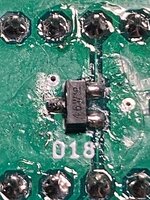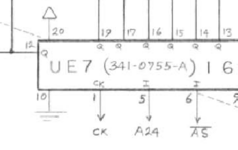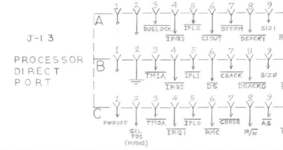Let me know if connecting that pin to /AS will work for you.
It certainly looks like. I should run the boards for longer before claiming victory, of course, but one of them that used to show the issues after 6-8 minutes on a cold boot every single time has been running for over two hours with no signs of any artifacting. I keep stuff on screen that moves the pixels around and monitor it, and I'll interact with the machine a bit too. If there was still a problem I would likely have seen it by now.

Purely as an experiment, and for my own entertainment, I took one of my original SE/30 boards with the factory bodge wire and reversed it so that it would run like a Reloaded board, with UE7 connected to /Nubus. I ran it for an hour and could not see any artifacting. This is not really surprising since only like 1-2% (I guess??) of the Reloaded builds actually exhibit any issues and the same could be true for the original boards too. My conjecture is that it probably took Apple a while to find and fix the problem since it was only very occasionally showing up and by that time the boards had already gone to mass production. So the SE/30 engineers were probably very well aware of the problem and we've kind of gone through Apple's forgotten troubleshooting process again, almost 35 years later.
I guess /Nubus might switch a little earlier than /AS and that would result in addresses getting latched into the VRAM before setup times are met.
Two questions for you,
@Bolle,
/AS stands for address strobe, correct?
What's the difference between /Nubus and /AS - and why do both options (almost) work?
What continues to strike me as odd is why the issue only shows up on a tiny minority of boards, why it comes and goes as the board warms up, and why swapping parts or touching certain pins changes the severity/pattern of the issue so much. Perhaps all this is normal for a circuit that's operating at the very edge of its spec, but I'm not experienced enough to say.
This has been an adventure and I've learned so much through the process. I started troubleshooting the issue in January and now we are in December so it's been a full year, which adds to a satisfying narrative. Seeing
@bromaster post about their identical issue last week gave me a boost in motivation as I started to see it was not really an issue specific to me; and in the last few days I felt as though I was getting very close to a solution. And that solution was really staring me in the face the whole time, it just took perserverance – and lots of it. When I was looking at my Apple SE/30 board last night and seeing things wired differently, I was in a state of disbelief and confusion initially. Then I started looking at it more closely and the pieces came together.






